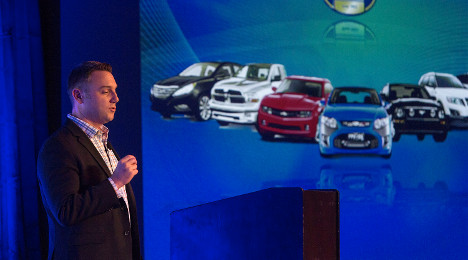NADA Weighs in on Incentive Spending

NADA Used Car Guide's Larry Dixon presents with fellow NADA analyst Jonathan Banks during the National Remarketing Conference in Las Vegas. Photo by Jonathan Fredin
The data makes one thing fairly clear about incentive spending: it’s substantial these days.
But how are incentives really impacting used-car values? And is elevated spending enough to cause a panic?
NADA Used Car Guide’s Jonathan Banks and Larry Dixon took a close look at the impact of incentive spending — plus a multitude of other factors that play a role in used-car pricing — during a presentation at Used Car Week's National Remarketing Conference titled “Used Vehicle Market: Impending Collapse or Continued Success.”
Given how the spike in new-car sales has evened out a bit, OEM incentives have been ramped up, approaching some of the highest levels in history, the NADA analysts noted.
Third-quarter incentives were up 18 percent year-over-year, with spending moving to a level not seen since 2004 when the market was awash with incentives, according to NADA.
Automakers have scaled back on cash incentives from a decade ago, they noted, but they are still putting record or near-record amounts on finance and lease subvention.
And according to the latest Guidelines report from NADA Used Car Guide, October was the 21st straight month of annual gains in incentive spending — and specifically, spending for the month was north of $2,700 per unit, a 5.7-percent year-over-year spike, NADA said, citing Autodata Corp.
Through 10 months of 2014, incentive spending is up 8.4 percent over the year-ago period, NADA indicated in the report.
But here’s an important caveat as it relates to used-car prices, as noted by Banks in the Guidelines report.
“Manufacturer incentives likely played less of a role in dampening used prices in October than in the prior three months. On average, spending grew by 5 percent compared to October 2013 according to Autodata data,” Banks said.
“This is down sharply from the 18 percent annual rate of growth recorded in the third quarter,” he continued. “After having risen by an average of 5 percent over the preceding five months, incentives for 2014 models fell by just over 1 percent compared to September, while automakers pulled spending back by an even steeper 8 percent on 2015 models.”
Banks also emphasized that the share of total new-vehicle sales from the 2015 model-year crowd was at 48 percent in October, versus 32 percent in September.
And here’s a big takeaway from Banks’ and Dixon’s presentation at NRC.
Yes, elevated incentive spending — along with stronger supply and weakening credit conditions — are likely to have a downward impact on used-car pricing.
However, there is something these developments and other concerns are met with: a more robust economy and the paradigm shift the industry has gone through recently, they said.
Specifically, NADA is projecting a 2.2-percent year-over-year drop in used-car prices for the fourth quarter. Further out, it expects Q4 2015 used prices to fall another 5 percent from Q4 2014.
Such a decline would result in used prices about 3 percent stronger than 2010 levels.
And this, NADA said, is fairly acceptable given how much strength and growth used prices have seen in recent years.

 View The Latest Edition
View The Latest Edition

